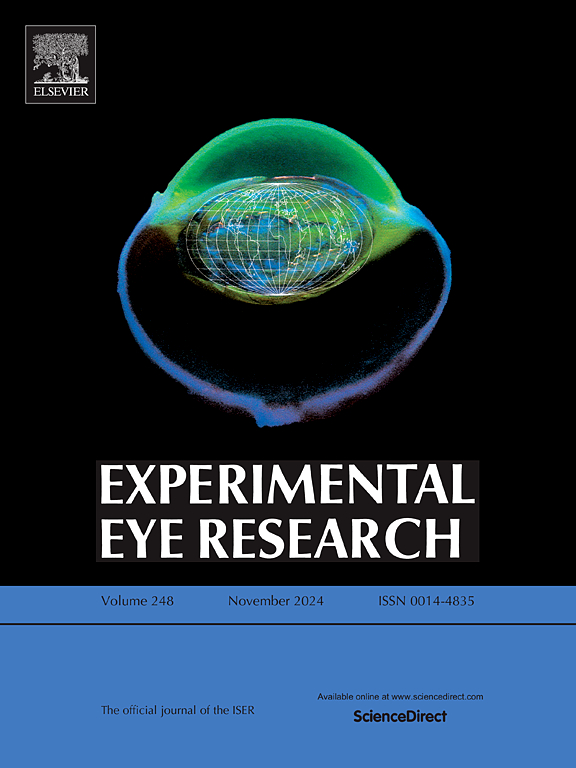Changes in vascular resistance with intraocular pressure and damage severity in experimental glaucoma
IF 3
2区 医学
Q1 OPHTHALMOLOGY
引用次数: 0
Abstract
There is evidence of changes in retinal hemodynamics in both experimental glaucoma and human disease. A major potential confound is that intraocular pressure (IOP) may also be directly affecting vascular resistance and/or the vasodilatory capacity of vessels in the optic nerve head and retina. This is particularly problematic in experimental glaucoma, where chronic IOP elevation is maintained, without the IOP-reducing medications typically used by patients involved in human studies. However, those animal studies remain invaluable, due to the possibility of extensive baseline testing in the knowledge that no glaucomatous loss has commenced, and due to the degree of control that is possible over parameters such as medication regimens. In this study, we aim to assess the impact of chronic IOP elevation on vascular resistance parameters, and separate it from the impact of glaucomatous damage severity. Longitudinal measurements were made using laser speckle flowgraphy before and after unilateral IOP elevation in 31 non-human primates. The pulsatile waveform was extracted and used to calculate the pulsatility index (maximum minus minimum, as a proportion of the mean) and resistivity index (maximum flow minus minimum flow, as a proportion of the maximum), in both the major vessels and the other tissue within the optic nerve head, for an average of 18 time points per animal. The vascular resistance indices increased with IOP at both locations, both in the full dataset, and in the subset of data points restricted to the visit at which IOP first exceeded 30 mmHg until the resistance index reached its maximum for that eye (all p < 0.001). After adjusting for the influence of IOP using coefficients from linear mixed effects models, the resistance indices exhibited non-monotonic relations with damage severity, first increasing from baseline, but then decreasing back to or beyond the normal range in eyes with more severe damage. Further studies are needed to accurately characterize the location and timing of these changes during the course of glaucomatous damage, which would help identify the pathophysiologic processes that are underway at different stages of the disease.
求助全文
约1分钟内获得全文
求助全文
来源期刊

Experimental eye research
医学-眼科学
CiteScore
6.80
自引率
5.90%
发文量
323
审稿时长
66 days
期刊介绍:
The primary goal of Experimental Eye Research is to publish original research papers on all aspects of experimental biology of the eye and ocular tissues that seek to define the mechanisms of normal function and/or disease. Studies of ocular tissues that encompass the disciplines of cell biology, developmental biology, genetics, molecular biology, physiology, biochemistry, biophysics, immunology or microbiology are most welcomed. Manuscripts that are purely clinical or in a surgical area of ophthalmology are not appropriate for submission to Experimental Eye Research and if received will be returned without review.
 求助内容:
求助内容: 应助结果提醒方式:
应助结果提醒方式:


